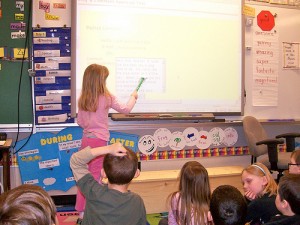 I’m really not good at remembering facts. With increasing access to internet information, that’s become less and less of an issue, but it does mean that as I seek to understand issues I have a preference for getting the ‘big picture.’ It is only through finding a structure that I can hope to remember important details so that facts fit together and make sense to me. It is perhaps for this reason that I especially appreciated Linda McQuaig and Neil Brooks’s book The Trouble with Billionaires.
I’m really not good at remembering facts. With increasing access to internet information, that’s become less and less of an issue, but it does mean that as I seek to understand issues I have a preference for getting the ‘big picture.’ It is only through finding a structure that I can hope to remember important details so that facts fit together and make sense to me. It is perhaps for this reason that I especially appreciated Linda McQuaig and Neil Brooks’s book The Trouble with Billionaires.
Simply put, The Trouble with Billionaires makes the case that income inequality is bad for society and bad for democracy.
“In unequal societies,[…] [t]he very rich tend to withdraw into their own rarified world, traveling by limousines and private planes, entertaining themselves at exclusive clubs and resorts, and living physically apart form the rest of the population, often behind gates or even walls. They come to see themselves as essentially independent of society, purchasing their own health care and education and relying on their own security systems. This leads to resentment that their tax dollars are paying for costly public services that they don’t use, leaving them determined to reduce these costs to keep their taxes from rising. Given their political clout, they’re able to maintain enormous pressure on politicians to keep taxes low, thereby starving the public system of the funds needed to maintain shared services and programs that are basic to the well-being of the broader community. The deterioration of key public services and programs increases the vulnerability of most members of society, as well as exacerbating social divisions and stress levels.” (Chapter 9)
McQuaig & Brooks develop their argument throughout the book first by methodically outlining the historical similarities of the crash of 1929 and the travesty of the financial collapse in 2009. John Kenneth Galbraith, in his book The Great Crash of 1929, the authors point out, identified five reasons for the crash, the first and most important being the bad distribution of income. McQuaig and Brooks’s accounting of the economic policies and players is informative and easy to follow. They takes care to carefully explain the terms which we’ve all read about in the paper but may not have fully understood, terms such as credit default swap (CDS), insurance bundled mortgages, hedge funds, and subprime mortgages. They includes thriller-story like details of how they all played out to culminate, with a number key players such as Joseph Cassano, Angelo Mozilo, Gary Shilling, Stanford Wiell, John Paulson, Bernie Madoff, and Alan Greenspan, in the final fiasco in which the real losers were inevitably always the state, the taxpayers and the working poor.
Holding Bill Gates up as the poster boy billionaire, McQuaig and Brooks move on from an historical account to not only effectively make the case that Gates is not entitled to his billions, particularly given that Gary Kildall was the real inventor of the PC operating system, but also to argue that Gates’ role as internationally renowned philanthropist is misguided. As per the January 2013 article in the Guardian paper, “Philanthropy is the Enemy of Justice,” McQuaig and Brooks strongly support the belief that philanthropy works against democracy. The real philanthropists it can be said, are the millions of people around the world indentured to Corporations providing the funds to the world’s wealthy. The loss of democracy in the current philanthropy process stems from allowing billionaires to vote with their money, taking choice, access to resources, and power away from the people and governments where it belongs.
“Philanthropy provided the rich with some very significant benefits that they would be reluctant to relinquish. The benefits to the public are less clear, once the lost tax revenues are factored into the equation.” (Chapter 10)
The authors detail a very Canadian example of the downside of philanthropy with the story of Barrick Gold CEO and founder, Peter Munk’s donation to the Munk School of Global Affairs at University of Toronto. The way it works is that Munk’s $35 million donated dollars receive a $16 million tax reduction, so amounts to a donation $19 million in real cost to Munk. Taxpayers make up the $16 million through lost taxes while Munk in turn gets to make the decision as to what Canadian taxpayers are donating to. Additionally in the “deal” government is required to added $25 million from each of the Provincial and Federal governments, all so that the School of Global Affairs program and building gets named after Munk rather than the taxpayers who footed an equal if not greater amount.
“The capacity of the rich to undermine democracy–so obvious and yet so strangely invisible– is surely the most serious negative effect of extreme inequality. Even if we were somehow able to deal with all the other negative consequences, such as the myriad of ill effects on health and social well-being, we would still be left with the impact of extreme inequality on the very functioning of democracy.” (Chapter 10)
Perhaps even more blatant in this use of money for influence is the flow of money from wealthy power brokers to political parties, here and around the world. McQuaig and Brooks’s thesis fits nicely in this regard with the Academy Award winning 2010 documentary Inside Job, directed by Charles H Ferguson. While the movie goes beyond the scope of The Trouble with Billionaires in demonstrating the incestuous connections amongst the wealthy and the elected officials, McQuaig helps us understand how the circles of influence of our own western creation of oligarchs are clearly operating at the global level.
The bottom line, as per Louis Brandeis‘s observation, “we can have democracy… or we can have great wealth concentrated in the hands of a few. We cannot have both.”(Chapter 10)
In reading The Trouble with Billionaires I particularly appreciated that McQuaig is a Canadian journalist and so telling an international story but from our own Canadian perspective. McQuaig currently writes as a columnist for the Toronto Star. With at least two journalism awards, including the Atkinson Fellowship for Journalism in Public Policy and the National Newspaper Award, and nine books, six of which have become national bestsellers, she comes to this topic with a strong journalism background of high calibre. Neil Brooks taught tax law and policy at Osgoode Hall Law School for over 35 years. He has researched and written extensively on tax, tax planning and policy, corporate and international tax, and financing the welfare state including a number of pieces for the CCPA. For me this was all important background information in considering the more optimistic and hopeful stance at the close of the book which includes policy changes as a move towards a more democratic and socially just society. As a start their recommendations include the following:
- A more progressive income tax system with a rate of 60 percent applied to income above $500,000, and a new top rate of 70 percent for income above $2.5 million.
- Loopholes closed and the tax preferences that now riddle the income tax system and almost exclusively benefit the rich removed completely.
- Examples of this include the tax on only 50% of capital gains and business deductions for business related meals, entertainment, and travel.
- Support for the international implementation of a financial transaction tax which is sometimes referred to as the “Tobin Tax.
- Support for international measures for a clampdown on tax avoiders and evaders.
- Education and effort towards effecting a change in social attitudes toward taxation and its essential role in a democracy.
- An inheritance tax, and use the proceeds to introduce a new education trust for every Canadian child. McQuaig suggests a lifetime tax free inheritance allowance per person of up to $1.5 million with progressive taxation on fortunes after that rising up to 70% for over $50 million and then a $16,000 trust for children at age 16 for post secondary schooling or training.
The book is an easy and informative read, overall excellent background for a better understanding of the misguided thinking behind the neo classical economic theories of Milton Friedman and his followers. It is well researched and an excellent starting point for anyone seriously wanting to help us stand up for real democracy.
Other Resources and Related sites:
- While our current federal conservative government and our provincial liberal government in B.C. continue to espouse the importance of low tax rates, some research is showing that Canadians already understand the need for and benefits of higher taxes. See It’s time for BC to raise and reform taxes: There is a clear need to restore our fiscal capacity and fairness.
- And while most might assume that Canada already has a somewhat progressive tax rate, studies show otherwise, at least here in BC. See A Decade of Eroding Tax Fairness.
- It was bad enough that governments in the US and Canada refused to charge bankers and financial brokers involved in the 2009 collapse, but sad to see that governments are still refusing to regulate and stop similar activity. Are we really no better off. See Complex Investments Prove Risky as Investor Chase Bigger Payoff.
- Interested in what the top 100 Canadian CEO’s bring home? Personally I’d like to see what they pay in taxes as well, but check out Highest Paid CEOs in Canada…, for a start or go directly to the source document from the CCPA, Overcompensating.





